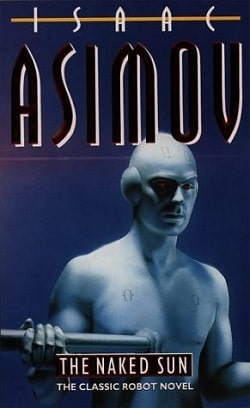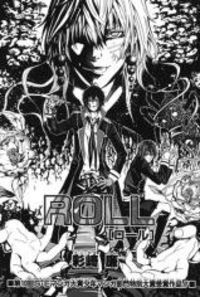Summary

The Naked Sun (Robot 2)
by Isaac Asimov
A millennium into the future, two advancements have altered the course of human history: the colonization of the Galaxy and the creation of the positronic brain. On the beautiful Outer World planet of Solaria, a handful of human colonists lead a hermit-like existence, their every need attended to by their faithful robot servants. To this strange and provocative planet comes Detective Elijah Baley, sent from the streets of New York with his positronic partner, the robot R. Daneel Olivaw, to solve an incredible murder that has rocked Solaria to its foundations. The victim had been so reclusive that he appeared to his associates only through holographic projection. Yet someone had gotten close enough to bludgeon him to death while robots looked on. Now Baley and Olivaw are faced with two clear impossibilities: Either the Solarian was killed by one of his robots--unthinkable under the laws of Robotics--or he was killed by the woman who loved him so much that she never came into his presence!
.
Read
The Naked Sun (Robot 2) on http://kissnovel.net
Martial Peak Reviews
The Naked Sun, the second book in Isaac Asimov's Robot series, is a masterful blend of science fiction, mystery, and philosophical inquiry that continues to explore the intricate relationship between humanity and technology. Set in a future where humans have colonized the galaxy and robots equipped with positronic brains serve them, Asimov crafts a narrative that is as thought-provoking as it is entertaining.
The story follows Detective Elijah Baley, a character introduced in the first book, Robot, who is sent from the bustling streets of New York to the serene and isolated planet of Solaria. This planet is characterized by its sparse human population and a heavy reliance on robots, which perform nearly all tasks for their human masters. The inhabitants of Solaria live in a state of extreme reclusiveness, communicating primarily through holographic projections, which sets the stage for a murder mystery that challenges the very foundations of their society.
At the heart of the narrative is the murder of a Solarian named Rikaine Delmarre, who was so withdrawn that he interacted with others only through holograms. The circumstances of his death are perplexing: he was bludgeoned to death in a setting where robots are programmed to obey the First Law of Robotics, which prohibits them from harming humans. This paradox creates a gripping tension throughout the novel, as Baley and his robot partner, R. Daneel Olivaw, must navigate a world where the lines between human and robot behavior blur.
Asimov's exploration of themes such as isolation, the nature of humanity, and the ethical implications of robotics is profound. The Solarians' choice to live in isolation reflects a broader commentary on modern society's increasing detachment from one another, a theme that resonates even more in today's digital age. The inhabitants' reliance on robots for companionship and labor raises questions about the essence of human connection and the potential consequences of substituting technology for interpersonal relationships.
Character development is another strong point in The Naked Sun. Detective Baley, who is often portrayed as a man of the people, finds himself at odds with the Solarian way of life. His discomfort with the planet's customs and his struggle to adapt to a society that shuns physical interaction highlight his humanity. Baley's partnership with R. Daneel Olivaw also evolves, showcasing a unique dynamic between human and robot. Their relationship is not just one of detective and assistant; it is a partnership that challenges preconceived notions of intelligence and emotion. Baley's growing respect for R. Daneel, who embodies both logic and empathy, serves as a microcosm of the larger theme of coexistence between humans and robots.
The plot unfolds with a series of twists and turns that keep readers engaged. As Baley delves deeper into the investigation, he uncovers layers of intrigue that reveal the complexities of Solarian society. The narrative is rich with Asimov's signature wit and intellectual rigor, making it not only a mystery to be solved but also a philosophical puzzle to ponder. The resolution of the murder mystery is both surprising and satisfying, as it challenges the characters—and the readers—to reconsider their assumptions about morality, love, and the nature of existence.
Asimov's writing style is clear and concise, allowing readers to immerse themselves in the world he has created without getting bogged down by excessive description. His ability to weave intricate ideas into a compelling narrative is a testament to his skill as a storyteller. The dialogue is sharp and often laced with humor, providing moments of levity amidst the tension of the murder investigation.
When comparing The Naked Sun to other works in the science fiction genre, it stands out for its unique approach to the detective story. While authors like Arthur C. Clarke and Philip K. Dick often explore the implications of technology on society, Asimov's focus on the ethical dimensions of robotics and the human condition sets him apart. His work invites readers to engage with complex moral dilemmas, making them reflect on their own relationships with technology and each other.
In conclusion, The Naked Sun is not just a murder mystery set in a futuristic world; it is a profound exploration of what it means to be human in an age of advanced technology. Asimov's ability to blend thought-provoking themes with an engaging plot and well-developed characters makes this book a must-read for fans of science fiction and mystery alike. The novel challenges us to consider the implications of our reliance on technology and the importance of genuine human connection, making it as relevant today as it was at the time of its publication. For those looking to delve into a world where the boundaries of humanity and robotics are tested, The Naked Sun offers a compelling journey that is sure to leave a lasting impact.






![Today Han Yoil is a Woman [Kontoru]](/upload/pic/manga/today-han-yoil-is-a-woman--kontoru-.webp)

















Reviews 0
Post a Reviews: